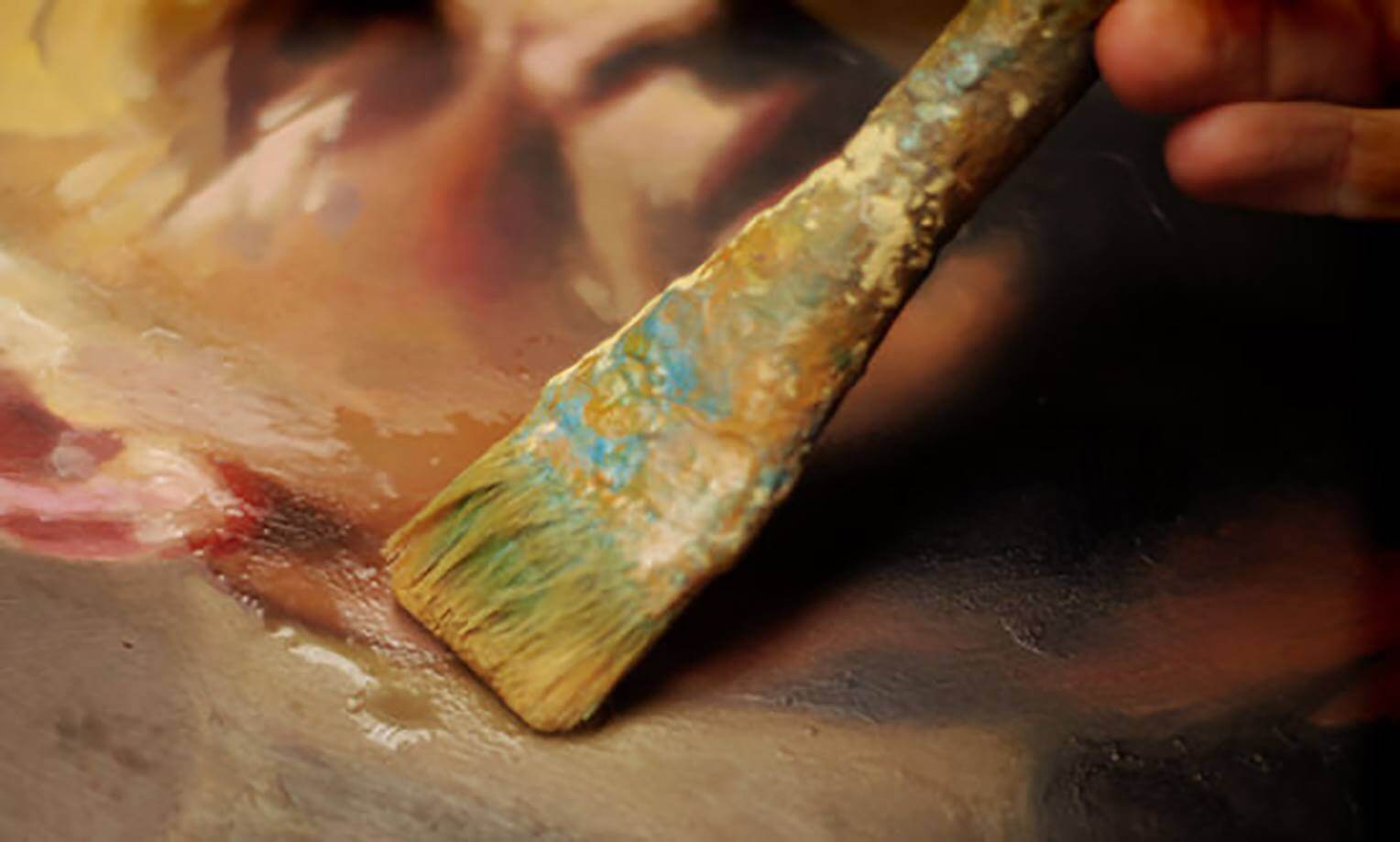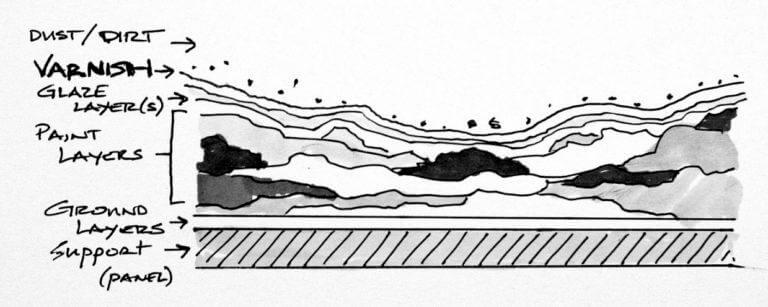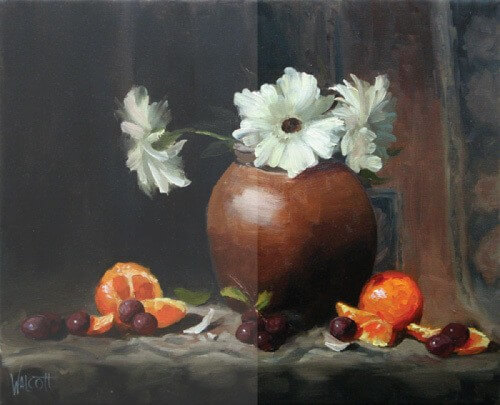How to varnish an oil painting

Varnishing an oil painting is an essential part of the painting process. (Photo by Will Kemp)
Varnishing an oil painting is an important part of the painting process. If you’ve completed an oil painting, you’ll notice that once completed and dry, the surface of the painting isn’t quite even. It has areas that shine and others that appear quite dull and matte.
Varnish comes into play in these situations to protect, even out, and improve the aesthetic finish of an oil painting. Along with this, it can protect a painting from environmental damage, like dust, dirt, or smoke. When a painting is finished with a removable varnish it can be cleaned by removing that layer, and the dirt from decades or centuries that has affixed to the top layer can be eliminated without damaging the painting.
Learning how and why artists varnish their work in an important part of an oil painting. The process can be done quite easily and can improve and protect the final oil painting.

An example of before and after varnish, with the colors brought back to the luster of when they were wet. (Photo by Cowans)
What Does Varnish Do?
Applying varnish to an oil painting helps to combat the uneven drying of paint layers. Because some oil paint pigments contain more oil than others, they may dry more glossy than others. Others contain less oil and dry with a matte finish. Darker color especially tend to dry and lose their original luster. Varnish helps to even out the final painting at the very end to unify the layers and different colors of paint.
In addition to aesthetic uses, this protective coat offers a dust-resistance and protective final coat for the painting. Many varnishes have UV light resistors to protect the paintings from fading when exposed to light. Most are acrylic, some removable and mineral spirit based rather than water-based. For this reason, varnish should always be used in a well ventilated or preferably outdoor area.

The in process restoration of "Portrait of a lady with a dog" 1590s, by Lavinia Fontana 1552-1614, restored by Rebecca Gregg Conservation. The left side has had the original varnish removed, while it remains on the right half.
Varnish in History and Restoration
The old masters used varnishing often in their painting process, with select artists writing about their experiences. Many renaissance painters favored a glossy finish to complete their paintings, which not only increased the feeling of a glow and atmosphere but increased the feeling of dimension in the painting.
However, many historical varnishes became cracked, dirtied, and discolored over centuries. Due to the lack of knowledge behind the proper compounds to create a clear, colorfast protective coat, many famous paintings have had to undergo restoration to remove their varnish and restore the painting’s former luster.
Fortunately, because of the use of ancient varnishes, many masterpieces have been cleaned, restored, and preserved. A restorationist will use a removing solution to carefully strip away the old varnish, without damaging the painting beneath. The painting can then be recovered with a modern solution to protect from dust, light, and other elements.

An unique view of the layers of a painting and the protective varnished layer. (Illustration courtesy of Gamblin)
Which Varnish Should I Use and How?
Varnishes used for oil painting are typically acrylic and can be applied by either a spray or brush. Using a brush can often produce unexpected results, ranging from uneven coverage to bubbles on the surface of the painting. Here at Evolve, we urge our students to use a spray varnish, which evenly and lightly coats the surface of the painting.
Aside from the application process, varnish can be roughly broken down into permanent and temporary. Permanent varnish, also called picture varnish, is just as it sounds: permanent. It can only be applied after the painting thoroughly dries, anywhere from 2 months to two years. Though conservationists can carefully removed it, the permanent version usually protects paintings that will not be retouched or cleaned for many years.
Temporary varnish, also known as re-workable, temporarily restores colors and can be reworked upon. It is thin and can be applied to the painting as soon as it is dry to the touch. Because if it's thin nature, it allows the paint to continue to deeply dry without cracking.
Choosing a varnish depends on your painting style, but re-workable options prove a good choice for beginner painters.

An painting in the process of varnishing by Jason Walcott.
Conclusion
Varnishing a painting is an important part of the oil painting process. Both for aesthetic and protective purposes, this important layer should be applied to every painting a student creates once they dry. Remember to choose a reworkable varnish, so that your painting can always be restored to its final luster.
For one of the Evolve recommended spray varnishes, click here.
For more information on historical varnish and conservation, click here.


